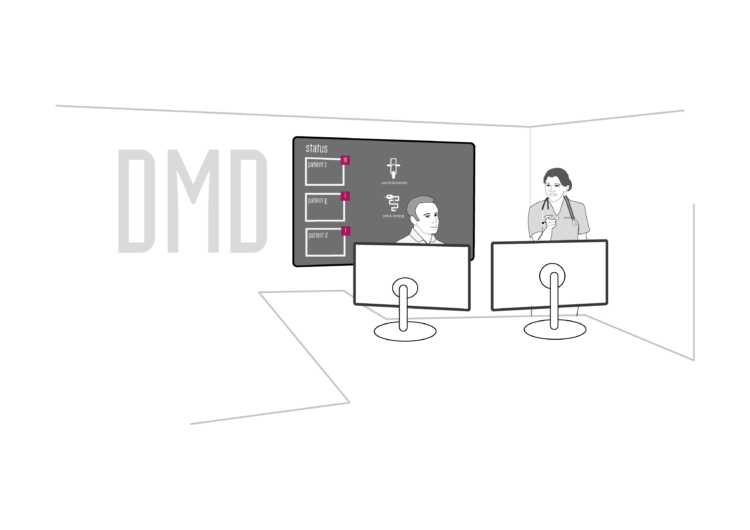Patient monitoring in the future care context
Apr 2017 - ongoing
Exploring the possibilities for making use of patient data in the hospital context.
Context
Expected is that using patient data will be of vital importance for further advancement of medical practices, in particular for making care more efficient and personalized, which in turn could help to keep care affordable for everyone. However, the current structure of patient monitoring lacks the possibilities to make optimal use of developments regarding the use of data (e.g. health wearables), neither does the structure sufficiently provide possibilities to intervene when problems occur.
Within the patient monitoring context, symptoms of this situation are showing in the day to day work of critical care professionals. IC nurses suffer from the abundance in alarms and it is commonly acknowledged that patients – in particular those suffering from delirium – are affected by this too. There could be argued that there is a need for an uncluttered alarm experience for both patients and healthcare professionals. Rules and regulations account for a substantial part of this problem, as they have a big impact on the design of medical devices. However, initiating the much-needed change in rules and regulations is rather difficult, in particular when it comes to using patient data. There is a delicate balance between sharing patient data and securing patient data.
Trends and developments in healthcare
A common trend theme is the use of patient data and how this could be used to improve care in general. This is much needed, because prevalent issues as health care expenses, personalized care and preventive healthcare demand decisive approaches and accurate solutions. Something that was already acknowledged earlier by those involved in the creation of the Dutch intensive care discipline. However using patient data brings other topics to the surface, such as data safety and – sharing. These topics will become more and more relevant when the development of healthcare wearables continuous. This asks from policy makers to find a balance between effectively sharing patient data with the competent authorities, while securing the safety of the data keeping it from unauthorized individuals or organizations.
In-hospital and distant patient monitoring
Healthcare trends point towards a future in which part of the monitoring of patients can be done from distance. By using data gathered through personal health care devices, care can become more preventive rather than reactive. Moreover, healthcare data can be utilized to personalize care and adjust treatment to the needs of the individual. Sadly, current rules and regulations are making it increasingly difficult for intelligent healthcare devices to reach their full potential, because using and sharing patient data is restricted. This results in a lack in strategies and structures that can manage these flows of data in hospitals. Nevertheless, a future in monitoring patients from distance exists, not only will this eventually reduce costs, it also adds to the quality of life of patients. Monitoring patients will soon be divided in two disciplines: monitoring of patients in hospital when there is no other option (second big image) and monitoring of patients from distance if the condition of the patient allows for it (first big image).
In order to alter the current rules and regulations to make this happen, patients and relatives need to organise in order to achieve change bottom up. Changes that are initiated top down, in particular directed from the EU, allow for the debate to be influenced by parties that approach the topic with politically motivated arguments, rather than the best interest of the patient, ultimately resulting in stagnation.




Data management department
One of the fundamental elements for the scenarios for in-hospital monitoring and distant patient monitoring is the data management department (DMD). In this department, patient data will be managed by qualified nurses and clinicians. With the help of algorithms, they will be enabled to play a supporting role in the monitoring and eventual treatment of patients. Considering the critical care context, the data management department will provide the treating health care professionals with valuable information about the trends in patient data. These trends can tell something about the patient’s condition and help to detect signs of deterioration at an early stage, which is important to prevent further harm for patients.
Outside the critical care context, the department will be responsible for the monitoring of patients that use healthcare wearables. Patients wearing these devices are either at risk of developing (critical) illness or at a stage of recovery, which make them eligible for (intensive) monitoring, however their situation is not severe enough to be hospitalized.
Giving these patients a health wearable could be practical for both healthcare provider and patient, as monitoring of vital signs is enabled through the wearable. Besides, it has minimal impact on the life of the patient and costs can be reduced significantly as less patients are hospitalized.

